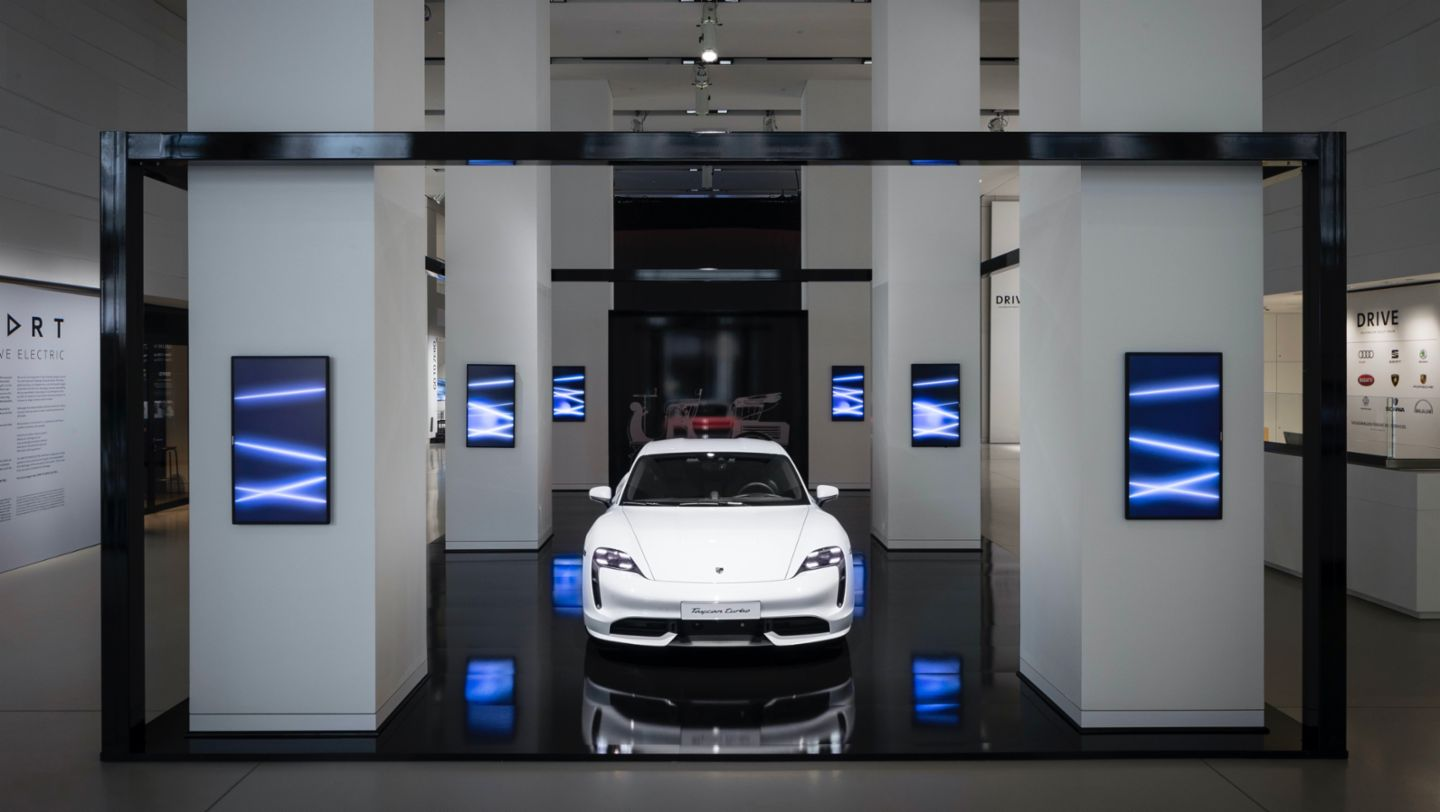 Image Credit:
Porsche AG
Image Credit:
Porsche AG
From 2030, Porsche wants to sell more than 80 percent fully electric models. The Porsche Taycan marks the first step in this direction. In the course of the coming year, the electric athlete could receive a facelift and be crowned with an even more powerful top model.
Despite the ongoing semiconductor crisis, the aftermath of the corona pandemic and runaway inflation, Porsche is currently doing well. Up to the third quarter of this year, the manufacturer was able to record a small increase in worldwide sales compared to the same period last year.
Even if the combustion engine and hybrid variants still account for the lion's share of sales, the Taycan is one of the most important model series after the two bestselling SUVs, the Cayenne and Macan, and was even able to overtake the veteran 911 last year.
However, since the Taycan is particularly affected by the current delivery bottlenecks, the electric sports car has meanwhile slipped just behind the 911 and the Panamera, despite high demand.
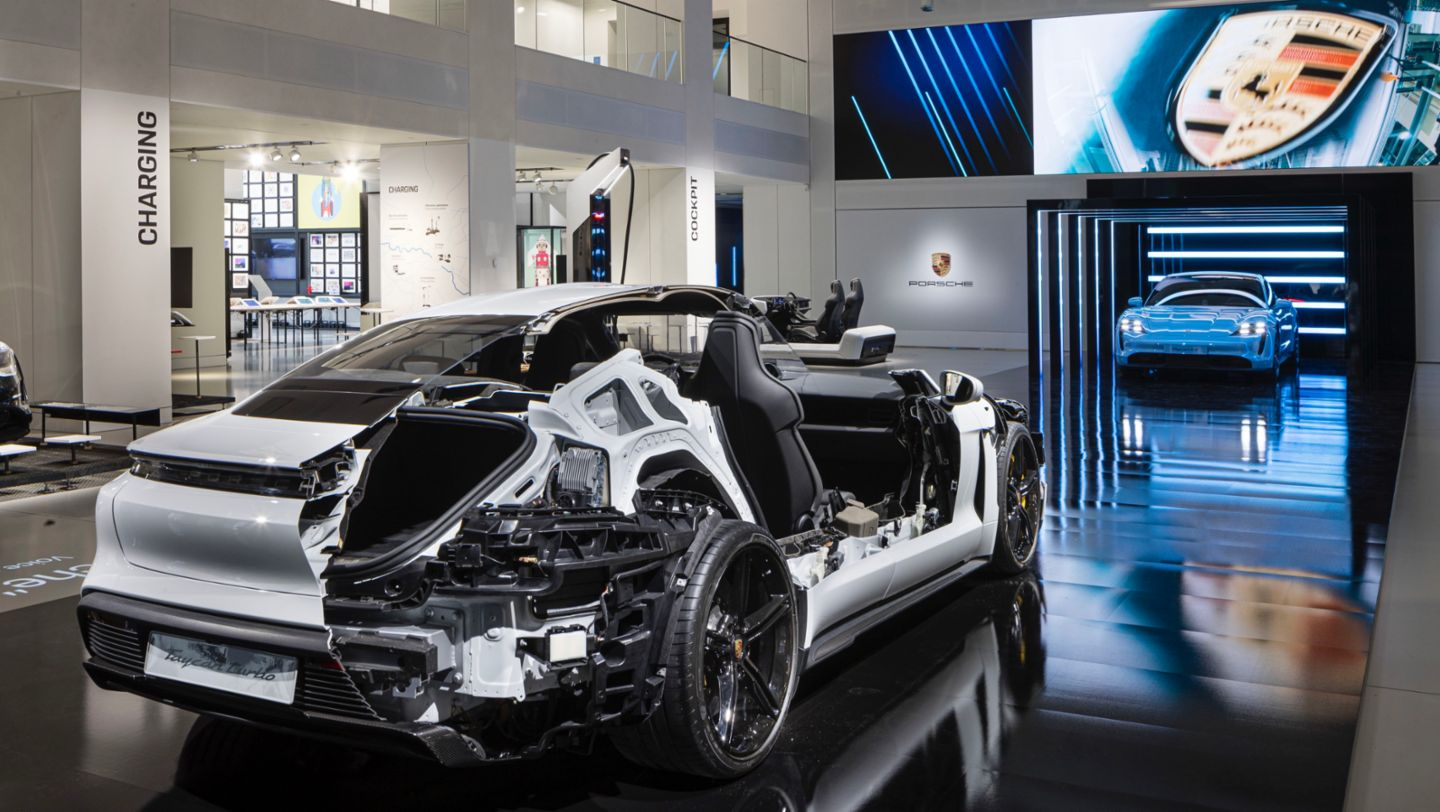 Image Credit:
Porsche AG
Image Credit:
Porsche AG
Nevertheless, Porsche can book the Taycan as a success because recently, the 100,000th unit rolled off the production line at the main plant in Stuttgart after just three years of production and the difficult market environment mentioned.
It is well known that all-electric vehicles will play an increasingly important role at Porsche in the future. Due to having one electric series only, the Taycan, the e-share is currently %11 (Q3/2022) and %14 (2021). That leaves eight years to reverse the ratio.
Simple mathematics would easily prove that this means that out of the six series currently on offer, at least four, maybe even five, will have to be offered as fully electric vehicles by the next decade at the latest.
Already Here: Porsche Taycan
 Image Credit:
Porsche AG
Image Credit:
Porsche AG
First of all, let's take a look at the further development of the current BEV series Taycan, which is based on the 800-volt platform internally called "J1". The model is currently available with 18 different battery, drive and body variants, making it the electric vehicle with the largest variety of variants on the market. Nevertheless, Porsche apparently still sees potential for further derivatives.
Photos from Germany are already circulating online showing a Taycan with a new front apron, large rear wing and roll cage. Now there is speculation that Porsche could place a more than 735 kW "Turbo GT" from the sports sedan above the current top model, the "Turbo S" (560 kW), to the Tesla Model S Plaid (750 kW) or the Lucid Air Sapphire (over 880 kW) to stand up to.
 Image Credit:
Porsche AG
Image Credit:
Porsche AG
A modified Taycan Turbo S with the new "performance kit" could serve as the basis, but it is also conceivable that the higher performance of the high-performance variant will only be offered together with the facelift of the Taycan, which will not be until the end of 2023 at the earliest, that is about four years after the start of production, could be rolled out.
Even if Porsche has not yet published any details about the Taycan facelift, it is obvious that the Stuttgart-based company will go a step further in terms of drive power, battery capacity (currently a maximum of 93.4 kWh) and charging capacity (up to 270 kW). We expect just over 100 kWh of gross energy content and a charging capacity exceeding the 300 kW mark.
This, in turn, should be feasible on the one hand through improved cell chemistry and an optimized battery package in combination with improved cooling. The latter is essential in order to increase the charging capacity further and squeeze even more drive power out of the battery pack.
With these modifications, the Taycan should be ready for the second half of 2023, and these changes could lay the foundation for the "Turbo GT". In perspective, the series could account for around 20 percent of Porsche sales if the supplier situation eases up again.
Coming Soon: Porsche Macan
 Image Credit:
Porsche AG
Image Credit:
Porsche AG
Porsche recently gave us the first glimpse into the technology of the brand's second electric car, the upcoming Macan. In the next generation, the successful SUV will become a pure electric car and will be delivered in 2024.
The second and for the next few years the brand’s highest-volume electric model will be the second-generation Macan, which will initially be produced in the same factory in parallel with the current Macan with a combustion engine – at least as long as there is global demand for a combustion engine variant exists.
Whether due to this two-pronged strategy the Macan will initially be sold as "Macan electric", "Macan E-Performance" or another name suffix is still open. The fact is, however, that the new Macan electric (as we want to call it for better differentiation) will be based on the “Premium Platform Electric” (PPE for short) developed jointly with Audi, which is always accompanied by an 800-volt vehicle electrical system architecture for the high-voltage system.
Porsche has now communicated some data for the Macan electric. The Macan is to be offered with an all-wheel drive system – i.e. one electric motor on the front and one on the rear axle – and an output of up to 450 kW. The two permanently excited synchronous machines (PSM) with hairpin technology are said to deliver more than 1,000 Newton meters of torque to the axles.
We suspect that this could be the data of a "Macan electric Turbo" and that Porsche will add an even more powerful version, i.e. a "Turbo S", at a later date, which will then break the 500 kW mark. The respectful distance to the Taycan would still be maintained because the sports sedan would have already received the facelift mentioned earlier by then.
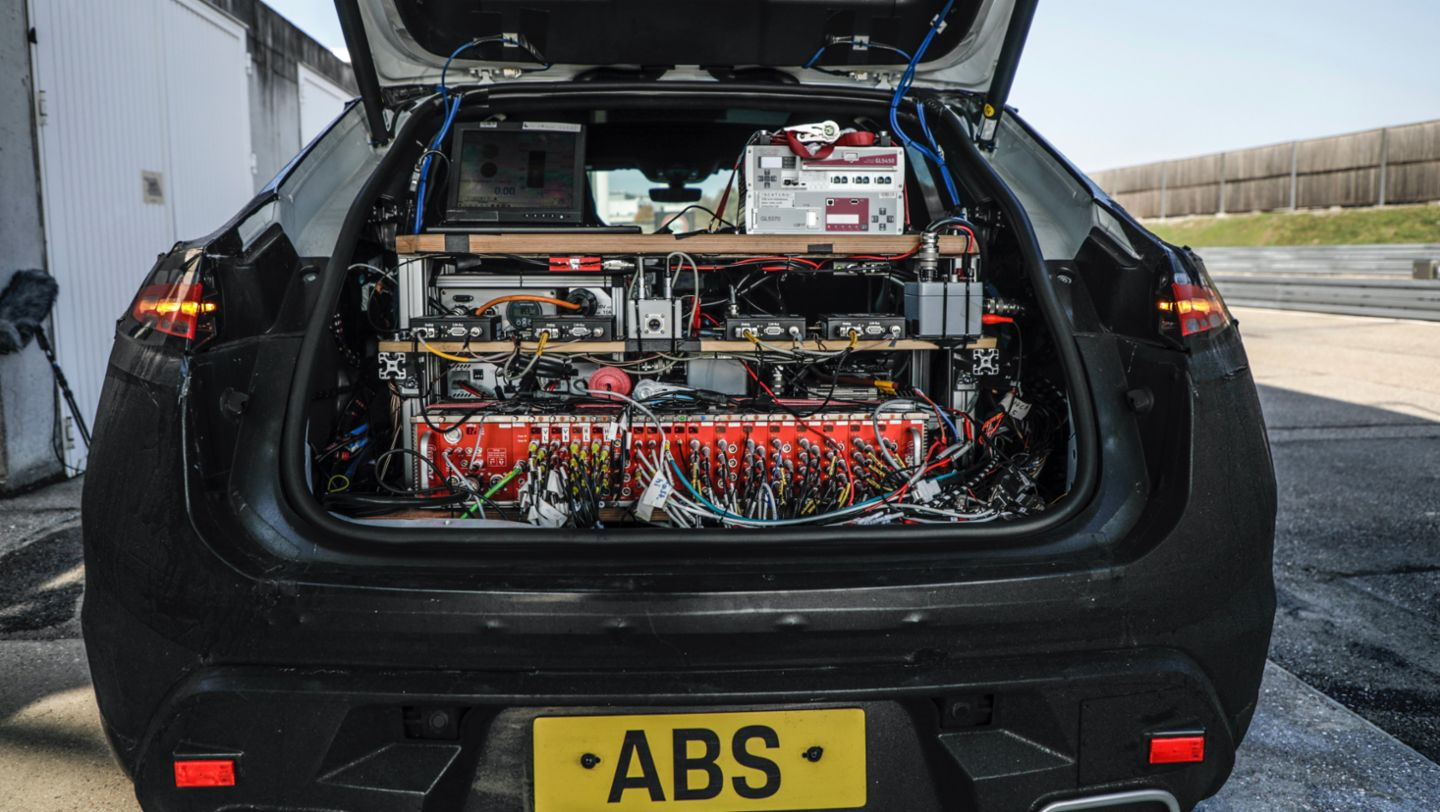 Image Credit:
Porsche AG
Image Credit:
Porsche AG
Even if Porsche is only talking about an all-wheel drive Macan so far, we assume that a weaker, range-optimized RWD version will also be available a good year after the market launch, such as the brand also introduced for the Taycan at a later date.
The PPE modular system would provide that; we can calculate around 250 kW of power for the weakest version, which should probably be sufficient for most customers. For comparison, the current Macan series does not even have 200 kW in the basic version.
There is still enough room for further derivatives between this presumed entry-level version and the turbo model. If one sets logical leaps in performance here and orients oneself to the current Porsche nomenclature, then a Macan S with around 300 to 350 kW and a GTS model with around 400 kW can be expected, which in turn could be presented later. There will probably only be the Turbo and the S model at the start.
All variants have the PSM drives on the rear axle in common, which for the first time, are operated via efficient (and expensive) silicon carbide inverters. For cost reasons, the front-axle drives of the all-wheel drive variants are supplied via conventional IGBT inverters, but since the main drive is at the rear anyway, the slight efficiency disadvantage can be accepted.
All drives only have a one-speed gearbox; the second gear, as in the Porsche Taycan on the rear axle, has been omitted. Incidentally, the electric motors are manufactured in the main factory in Zuffenhausen, Germany.
Regarding the battery, Porsche does not yet dare to produce it in-house and continues to outsource the vehicle's most expensive component to a supplier. As with the Taycan, Dräxlmaier will build the battery in a new plant near Porsche’s production site.
 Image Credit:
Porsche AG
Image Credit:
Porsche AG
The battery should be able to store around 100 kilowatt hours, corresponding to Audi's information for the A6 e-Tron. Twelve cell modules with prismatic cells are installed (although not yet in the format of the VW unit cell ).
Similar to the Taycan or Audi Q8 e-Tron; however, we also expect a smaller battery variant that could then come to around 80 to 85 kWh. This corresponds to an assembly with ten out of twelve cell modules in the battery pack.
Porsche also promises short charging times at the charging station: Less than 25 minutes should elapse for the charging from 5 to 80 percent. This thesis is also supported by the specification of the charging power, which according to Porsche, will be "over 270 kW".
The double-sided cooling, with which the cells are tempered (i.e. also heated), will be helpful. So far, most battery packs only have one-sided cooling, which leads to a high-temperature difference in the cell under high loads (such as during a fast charging process) and can limit the charging capacity.
Further technical highlights will be the "Integrated Power Box", which combines the onboard charger (standard 11 kW, optional 22 kW), the high-voltage heater and the AC/DC converter for the 12-volt onboard network component combined.
For charging at 400-volt charging stations, Porsche will no longer use the "booster" (a separate AC/DC step-up converter) used in the Taycan and will instead install a technology called "bank charging".
 Image Credit:
Porsche AG
Image Credit:
Porsche AG
The 800-volt battery with its twelve-cell modules is divided into two 400-volt batteries, each with six-cell modules, which are then charged in parallel. The two charging ports are located at the rear left and rear right, with one equipped with a Type 2 charging socket and the other with a CCS charging socket.
Let's move on to the chassis: for the first time, there will be (probably optional) rear-axle steering with a steering angle of five degrees in the Macan. Compared to the rear-axle steering of the Mercedes EQ models (up to 10 degrees), this is a relatively low value. Air suspension is installed as in the current model, and there are also mixed tires with up to 22-inch wheels.
An electronically controlled differential lock is installed in the top model for additional performance. Basically, the layout provides for a slightly rear-heavy weight distribution (48 to 52 percent) in order to improve cornering dynamics. This is achieved by moving the rear drive unit far to the rear; Porsche calls it the "performance rear end".
So far, only the start of delivery of the Macan electric in 2024 has been confirmed, but with some luck, the model could at least be presented at the end of 2023. Since Macan sales have so far accounted for a good quarter to a third of all Porsche sales, the Macan and Taycan together could already account for an e-share of 40 to 50 percent in the future.
Audi Q6 e-Tron
Audi will probably be able to present the first model on this platform with the Q6 e-Tron, which is anticipated to be presented at the end of 2023. The Macan electric will then follow as the second derivative on the new platform, after which we expect the Audi A6 e-Tron sedan and the station wagon A6 Avant e-Tron, which should differ only slightly from the studies in terms of series design.
Next Porsche Models to be Electrified
 Image Credit:
Porsche AG
Image Credit:
Porsche AG
Porsche 718 Boxster and Cayman
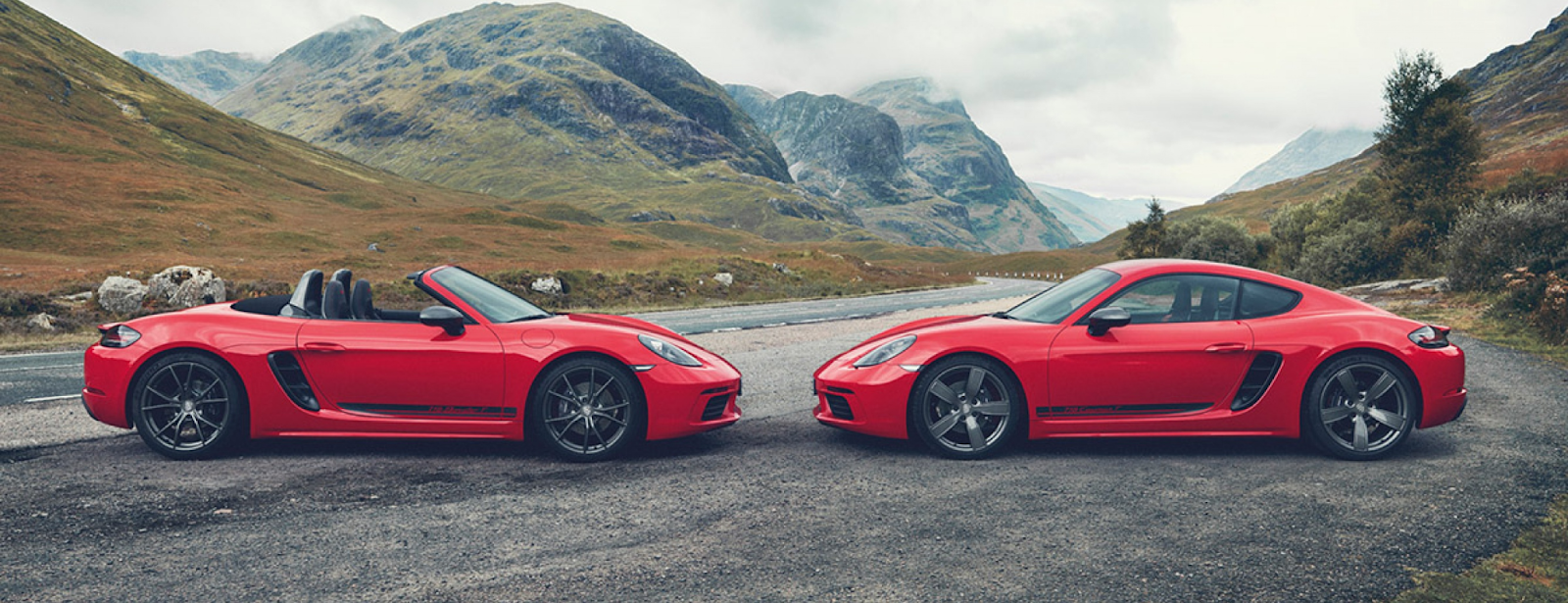 Image Credit:
Porsche AG
Image Credit:
Porsche AG
The spectacular Mission R racing car study has already anticipated some design elements of the next 718 series, which runs internally as the Porsche 983. The successor series of the "small" sports car takes over the basic layout of the current 718.
As a difference, it will have an extended wheelbase and an increased space behind the two seats, where the batteries will be installed, as Porsche revealed at the event. This means that the 718 electric (a name we chose for better differentiation) will not have a classic skateboard architecture in favor of a low seating position.
The 718 electric could be offered from 2025 as a Cayman coupe version and as a Boxster roadster version and should then only be available electrically. The then-third electric series from Porsche could only contribute around five to ten percent to the targeted e-share of 80 percent; after all, the 718 is the series with the lowest sales volume. Not enough for the desired goal.
Porsche Panamera
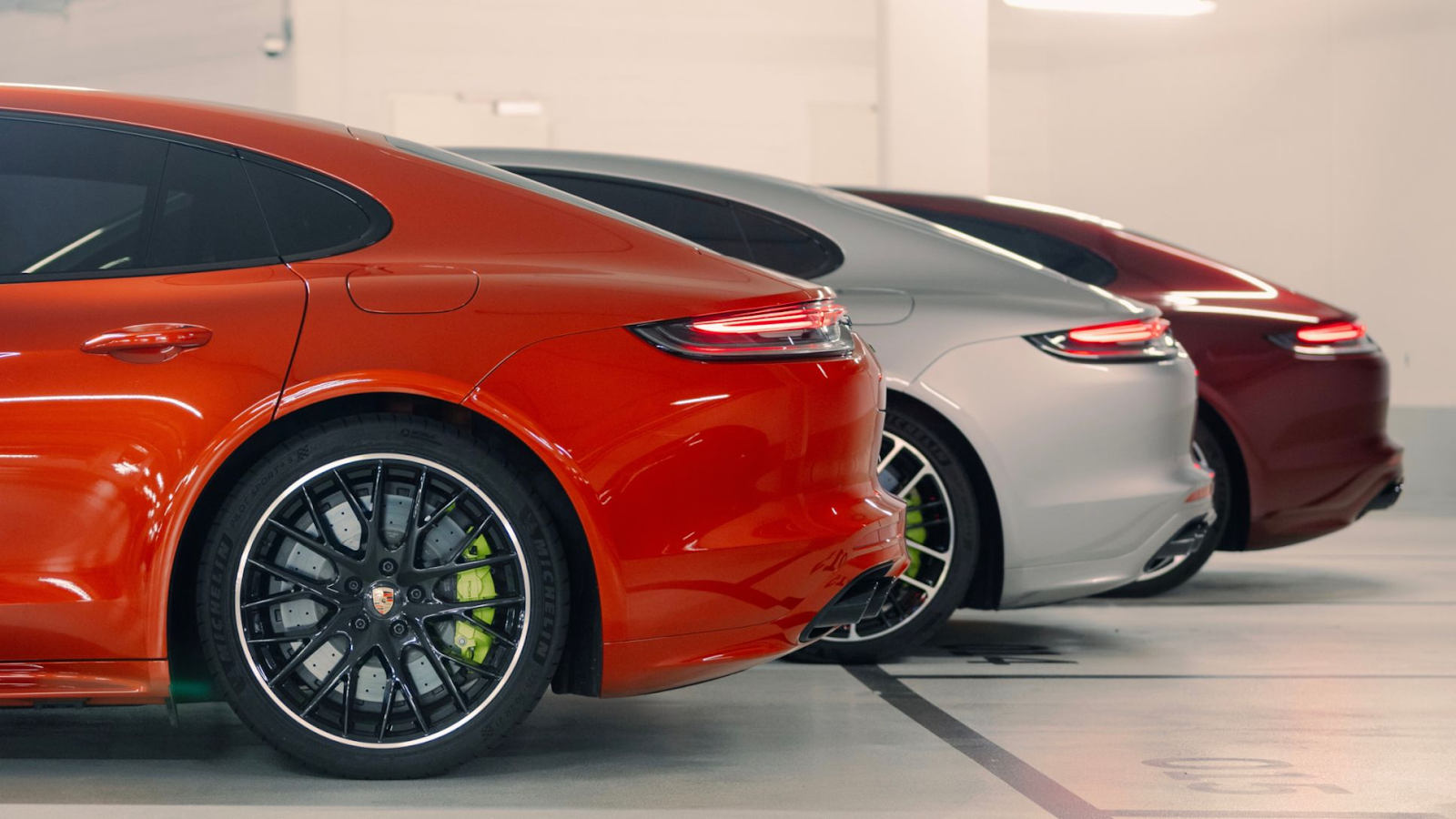 Image Credit:
Porsche AG
Image Credit:
Porsche AG
If you look at the other model series from Porsche, it quickly becomes clear who the following candidates for electrification are. Cayenne, Panamera, 911 and a newly announced luxury SUV series above the Cayenne, project name "K1" remain.
Porsche will continue to offer the 911 with combustion engines for as long as they can, so it falls out of the 2030 target. The current Panamera has been built since 2016 and would therefore have to be replaced between 2023 and 2024.
Since a Panamera electric is not yet in sight, Porsche could initially extend the luxury sedan with a second facelift, closer to the current Macan, in order to be able to present an electric successor based on the same PPE in the second half of the decade.
A second conceivable scenario would be another combustion engine generation, which would have to last until 2030 to be replaced by an electric successor on the SSP platform. Behind the SSP platform is the planned "Super" platform of the VW Group, which is intended to combine the MEB and PPE platforms.
However, it is also known that the sister company Bentley wants to bring the first electric model onto the market in 2025. The Porsche Panamera and the Bentley Continental GT now share the technical substructure, so synergies could also be achieved here in the future with the BEV models, perhaps even in the form of a parallel strategy (combustion engine and BEV) as with the Macan.
The Panamera models make up around ten percent of Porsche sales today. This proportion is very likely to be included in the BEV quota of 80 percent for 2030, which is why we expect a Panamera electric by the year 2024 at the latest.
Porsche Cayenne
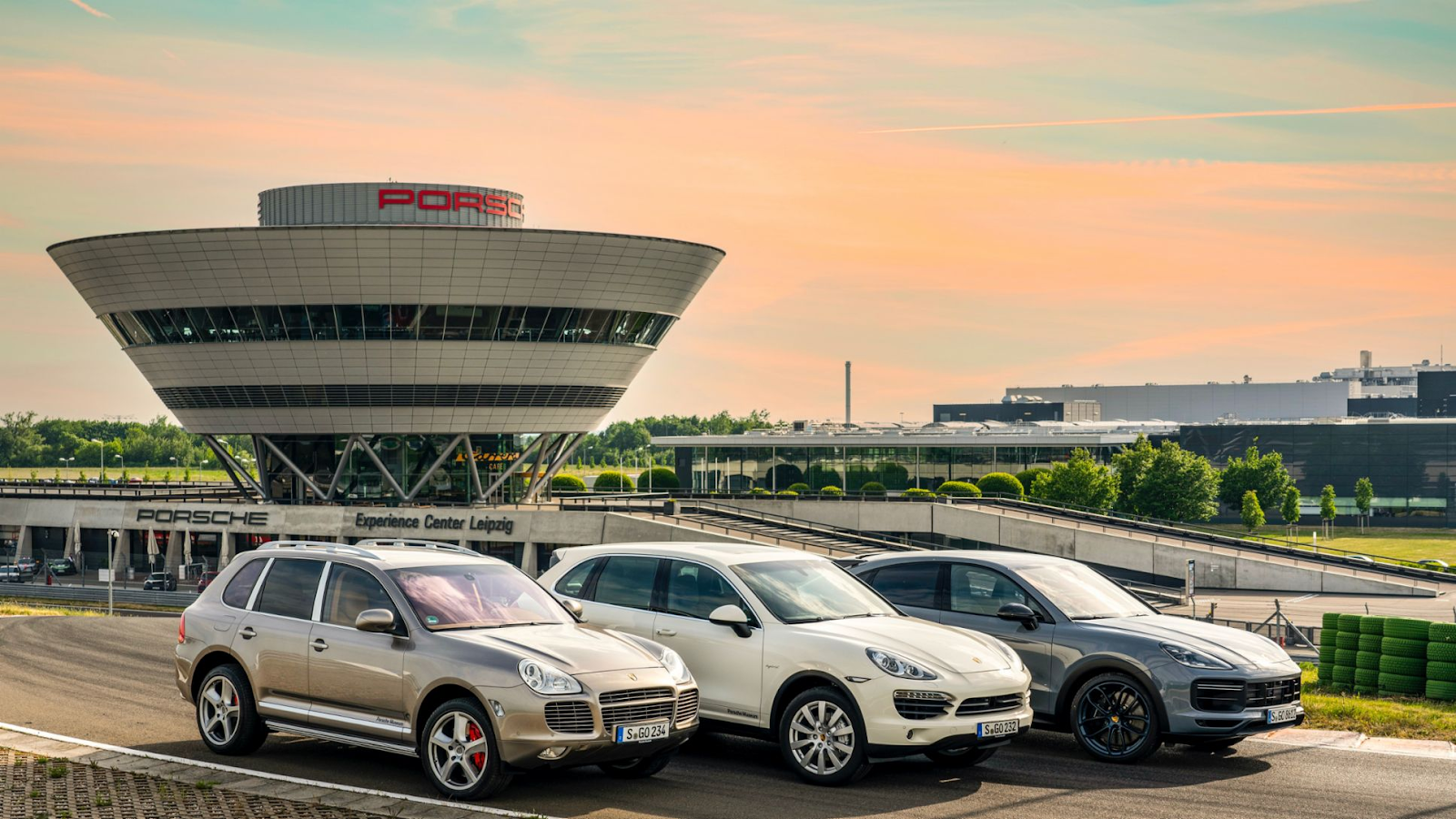 Image Credit:
Porsche AG
Image Credit:
Porsche AG
On the other hand, the Porsche Cayenne was only relaunched in 2019 and will probably be built as a combustion engine or hybrid until at least 2026. Changing the PPE modular system is then an option for the next generation. Today, the Cayenne is the model series with the highest volume, accounting for around 30 percent of sales. Taycan, Macan electric and Cayenne electric together could, therefore, almost suffice for the targeted 80 percent.
Then there is the K1, which is also to be produced in Leipzig and will have up to three rows of seats or seven seats. Porsche apparently sees a market here, especially in the USA and China, where the demand for large SUVs continues to be high, as Porsche boss Oliver Blume made clear in an interview. The K1 could compete with the Lotus Eletre as a " Hyper-SUV ".
New PPE Battery
In order to provide the battery capacities required for the large series, the PPE battery is expected to be equipped with the prismatic unit cell from 2026, and at the same time, the battery design with individual cell modules will be dispensed with.
This technology, which other manufacturers such as BYD are already using in series today and in which the cells are built directly into the battery housing, is called " cell-to-pack ". The intermediate stage of the cell module is eliminated, which increases the degree of utilization of the battery brewing space.
Together with a newer cell chemistry, the energy and power density that would then be possible should be sufficient to allow even a big ship like a Porsche Cayenne or K1 to drive appropriately far and fast.
Conclusion: Porsche Means Business
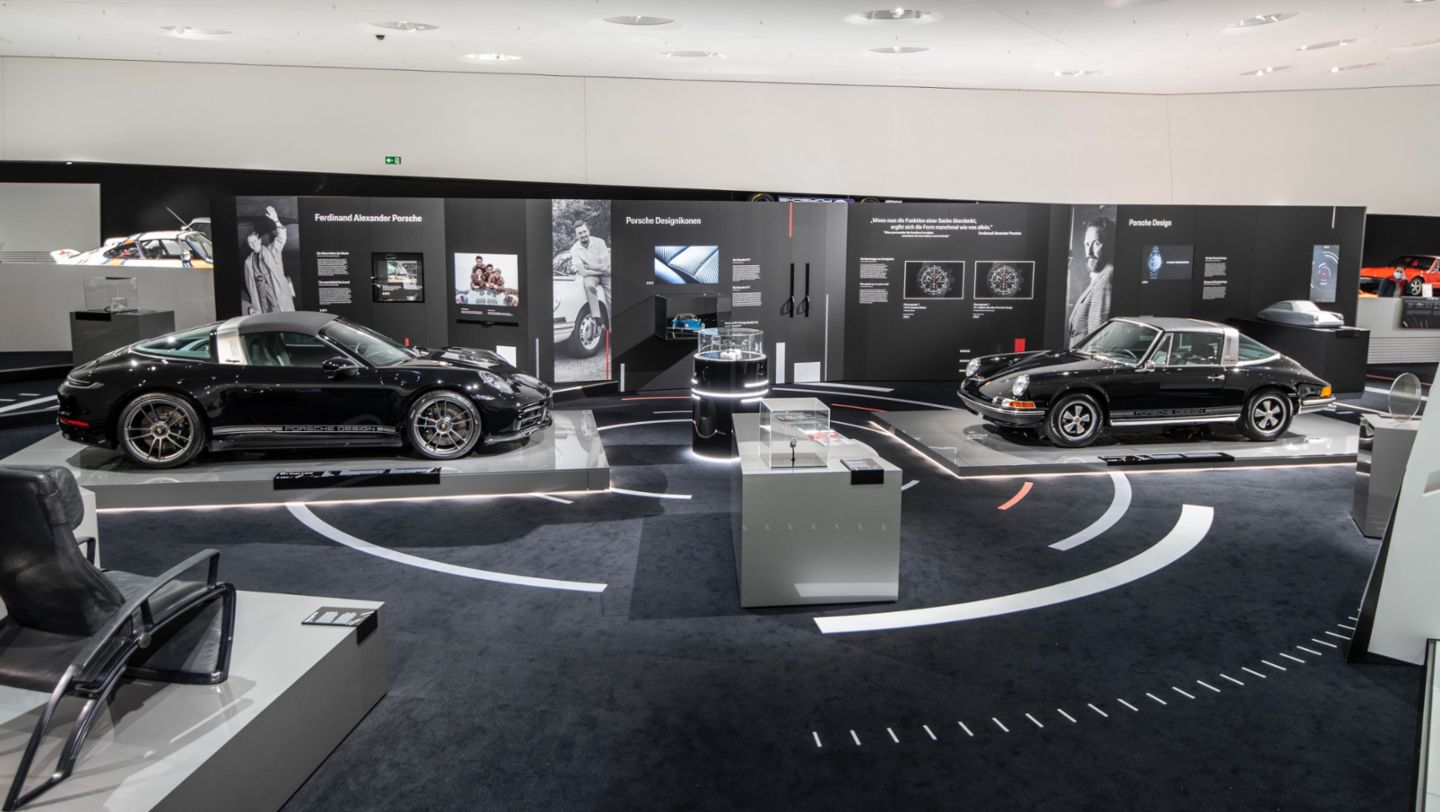 Image Credit:
Porsche AG
Image Credit:
Porsche AG
The Porsche Taycan laid the foundation for Porsche's electric strategy. It will account for around 15 to 20 percent of the e-share in the future. The Macan electric will then provide a decent boost, which will contribute around 30 percent to the e-share in the future.
While the Porsche 718 electric is of little relevance in terms of quantities (it is all the more important in terms of image technology), the electric Cayenne successor will ensure the necessary quantities for the 80 percent target.
The fifth E series will be the K1, which should also be launched between 2025 and 2030. With these five models, the goal set by Porsche seems achievable. There is still a big question mark about the market launch of the electric Panamera and the 911. The latter will probably not be available as an electric sports car until well after 2030, maybe even 2040.
For all your protection equipment needs, we recommend Coverking. They are the best in the business and always know what they are doing. The company digitally scans each vehicle available on the market with the latest technology.
The ability to scan allows them to create the best custom-fitting equipment possible as soon as a new model is released. So, you can be sure that they will be the first to carry protective equipment for these new Porsches as soon as they come out. With vehicles like these, you should really think about getting a custom-made cover.
Coverking is also the official protective equipment partner of most automotive manufacturers. Check out their catalog and find out what they can do for you and your vehicle.
Resources
Tankut Basar
Tankut Basar is an ARA (American Rally Assoc.) Racing Driver and an FIA Bronze Category License Holder. His passion for driving began with karting like most racers. He started racing internationally at the age of 22. Tankut loves everything car-related and will keep enjoying the drive until the end.



